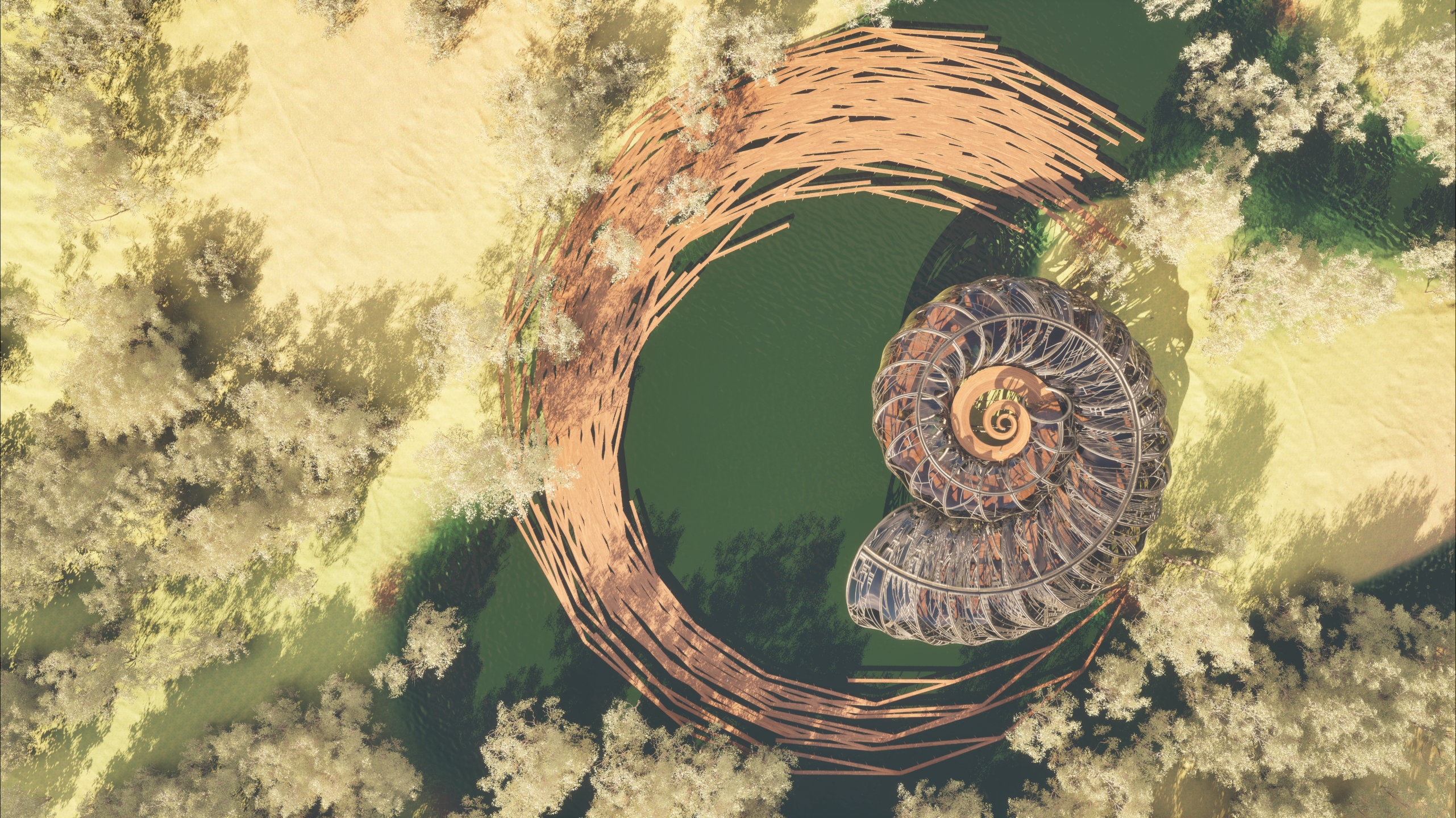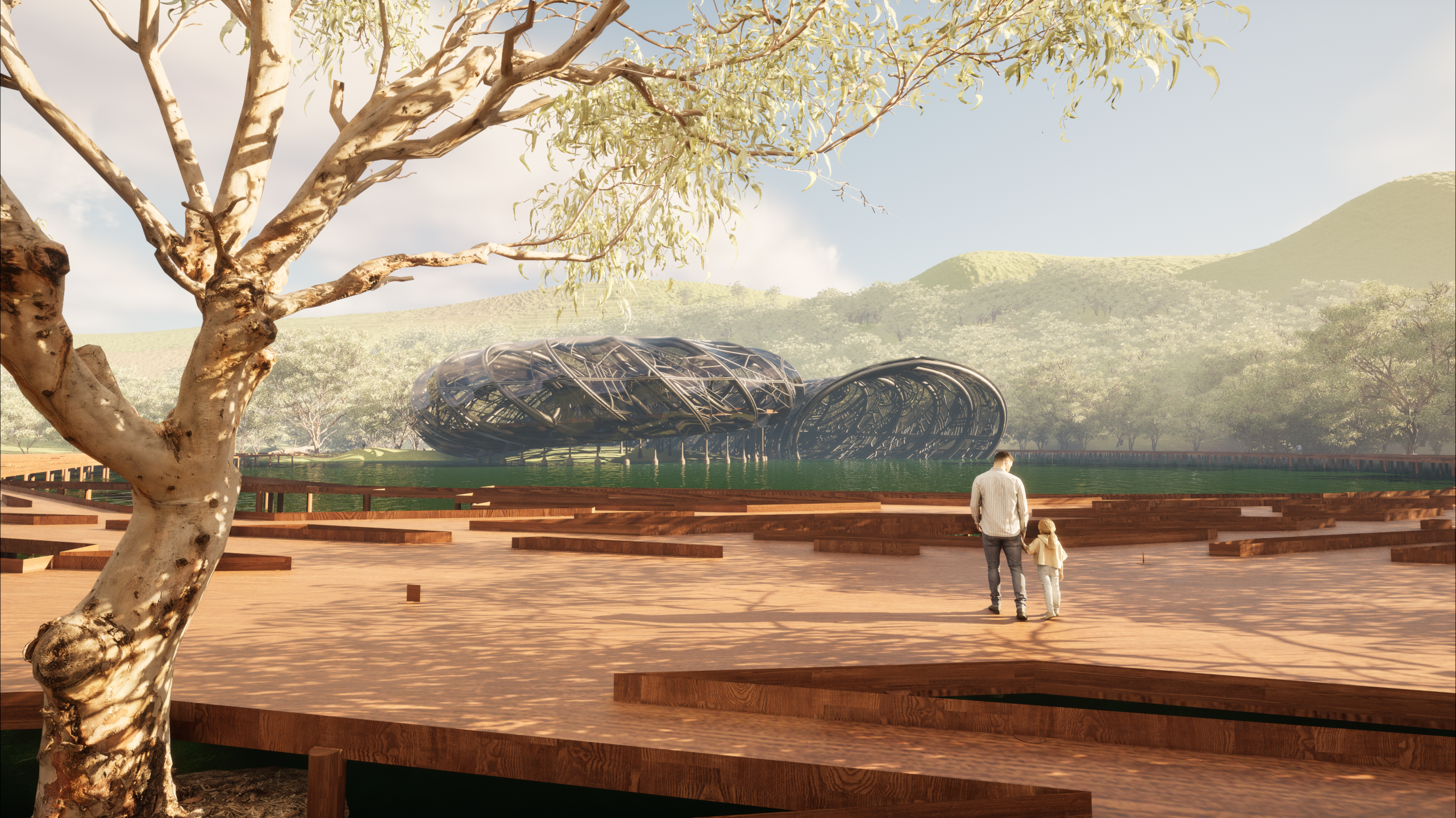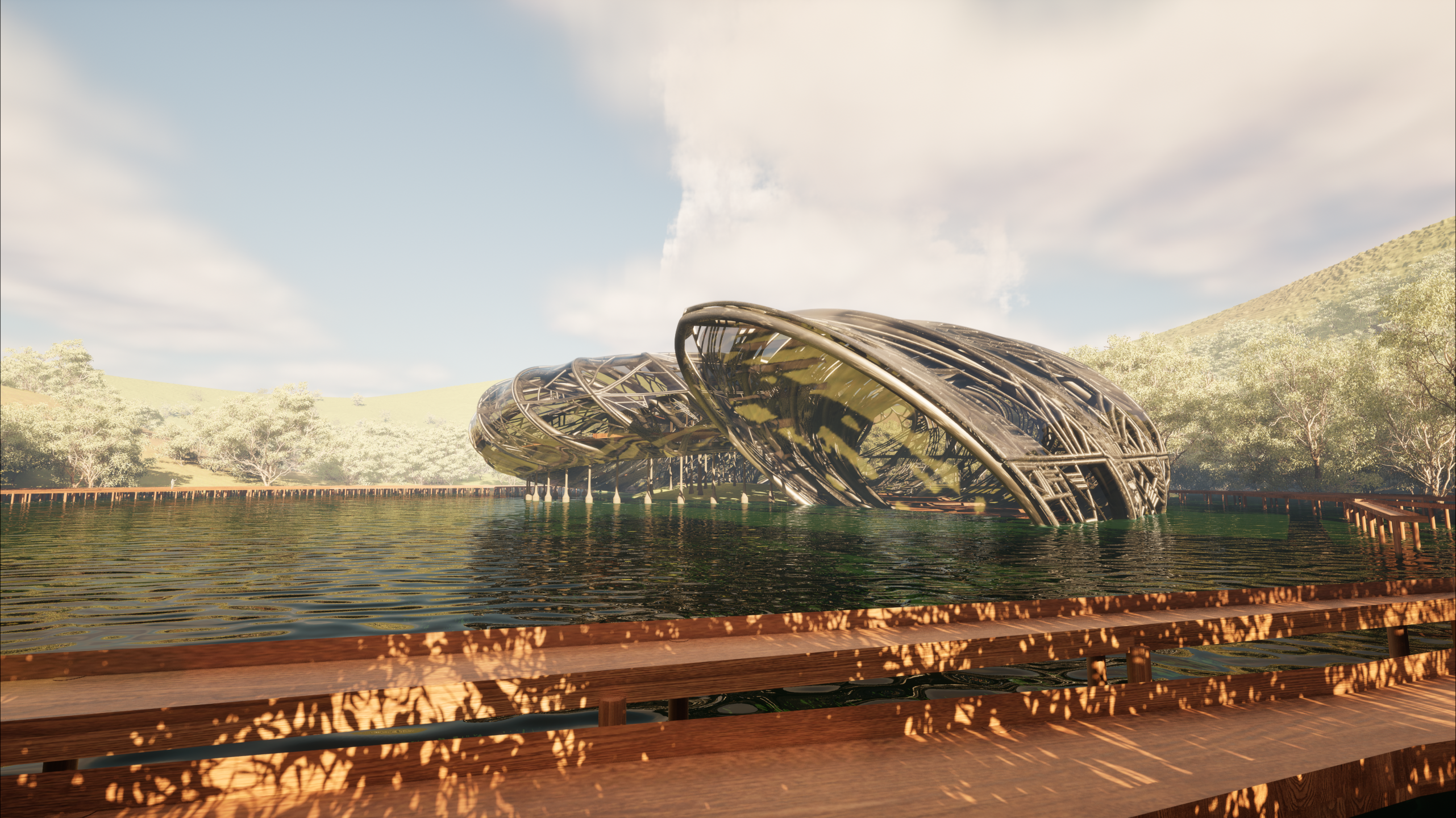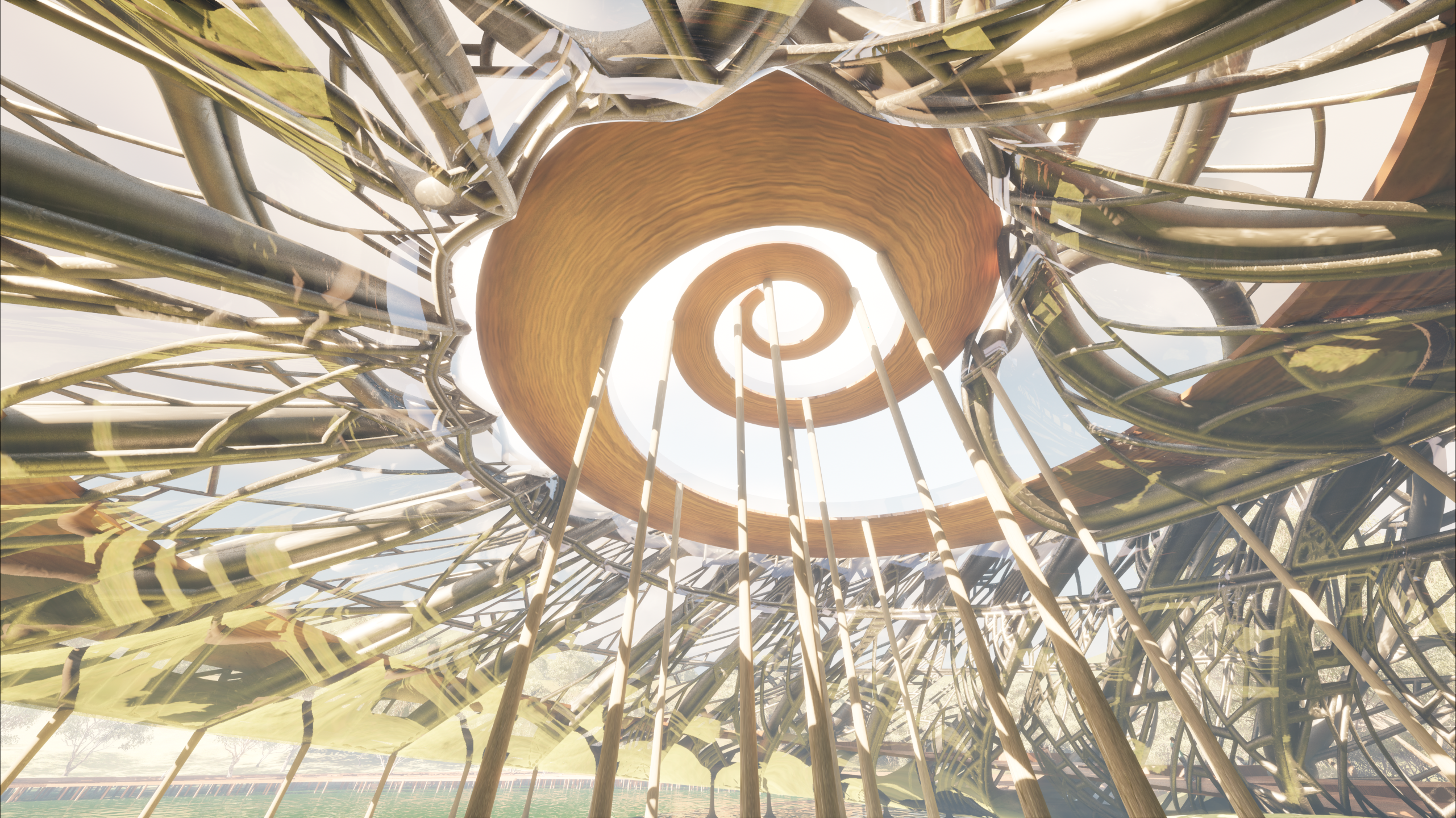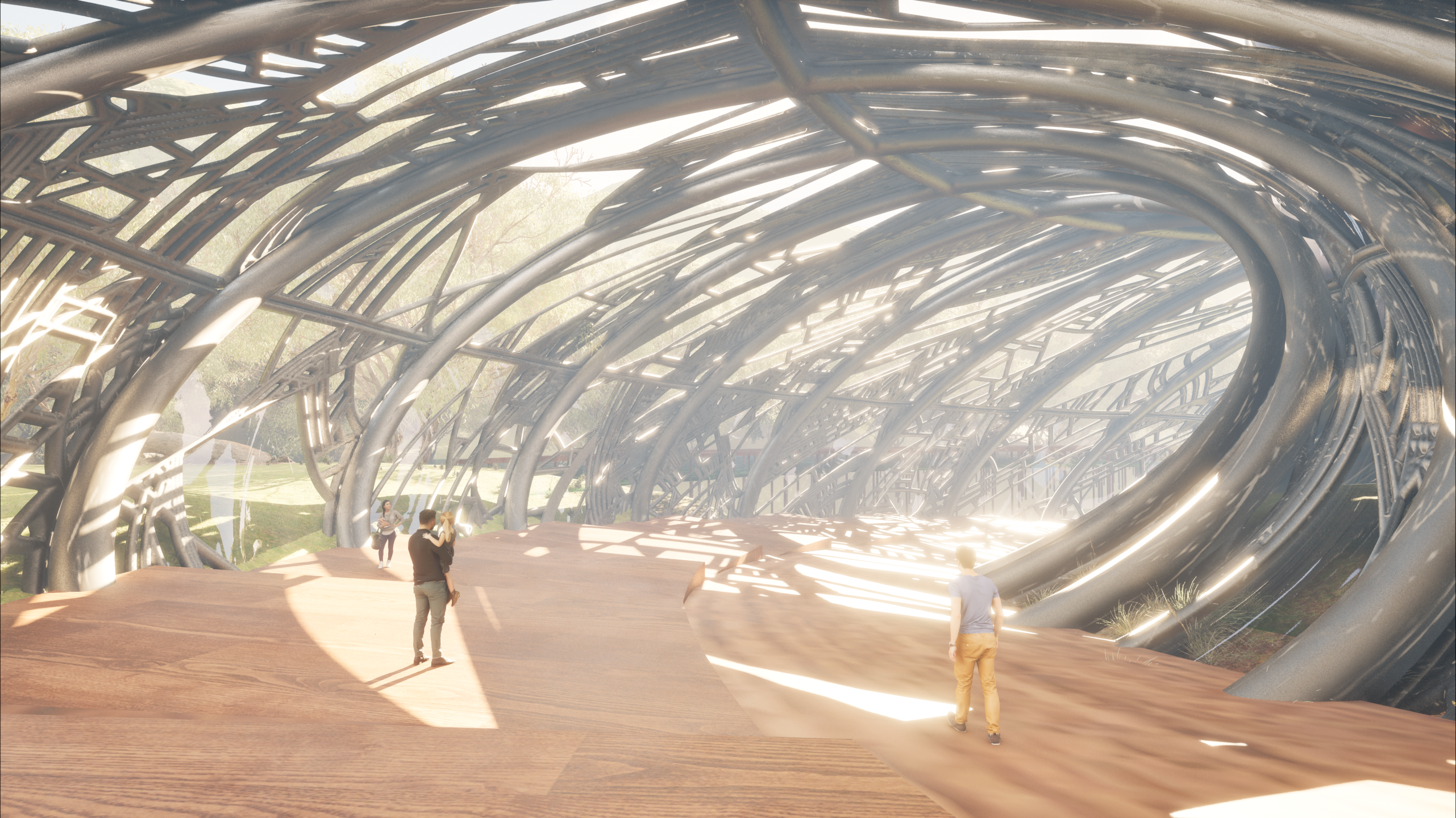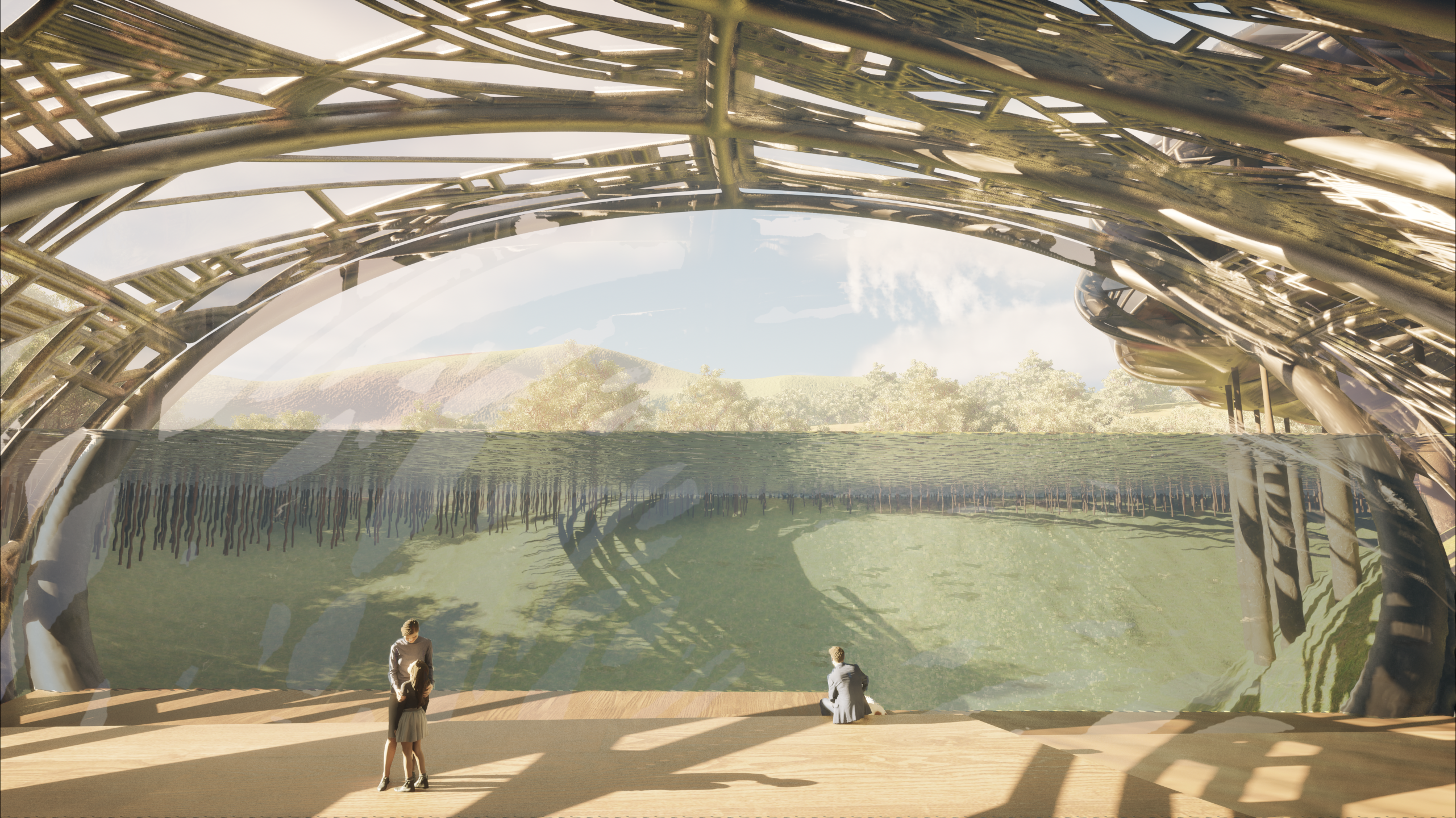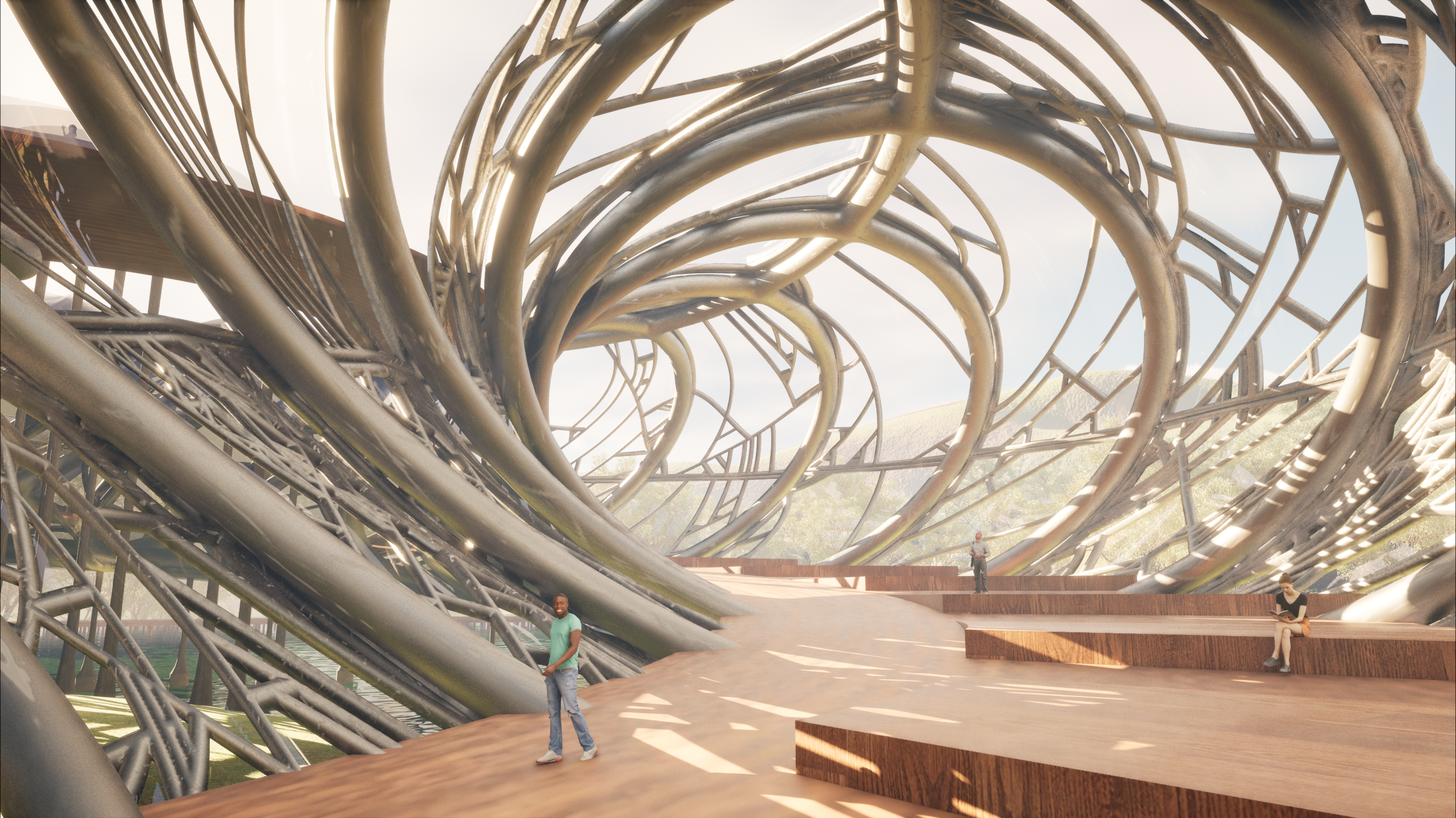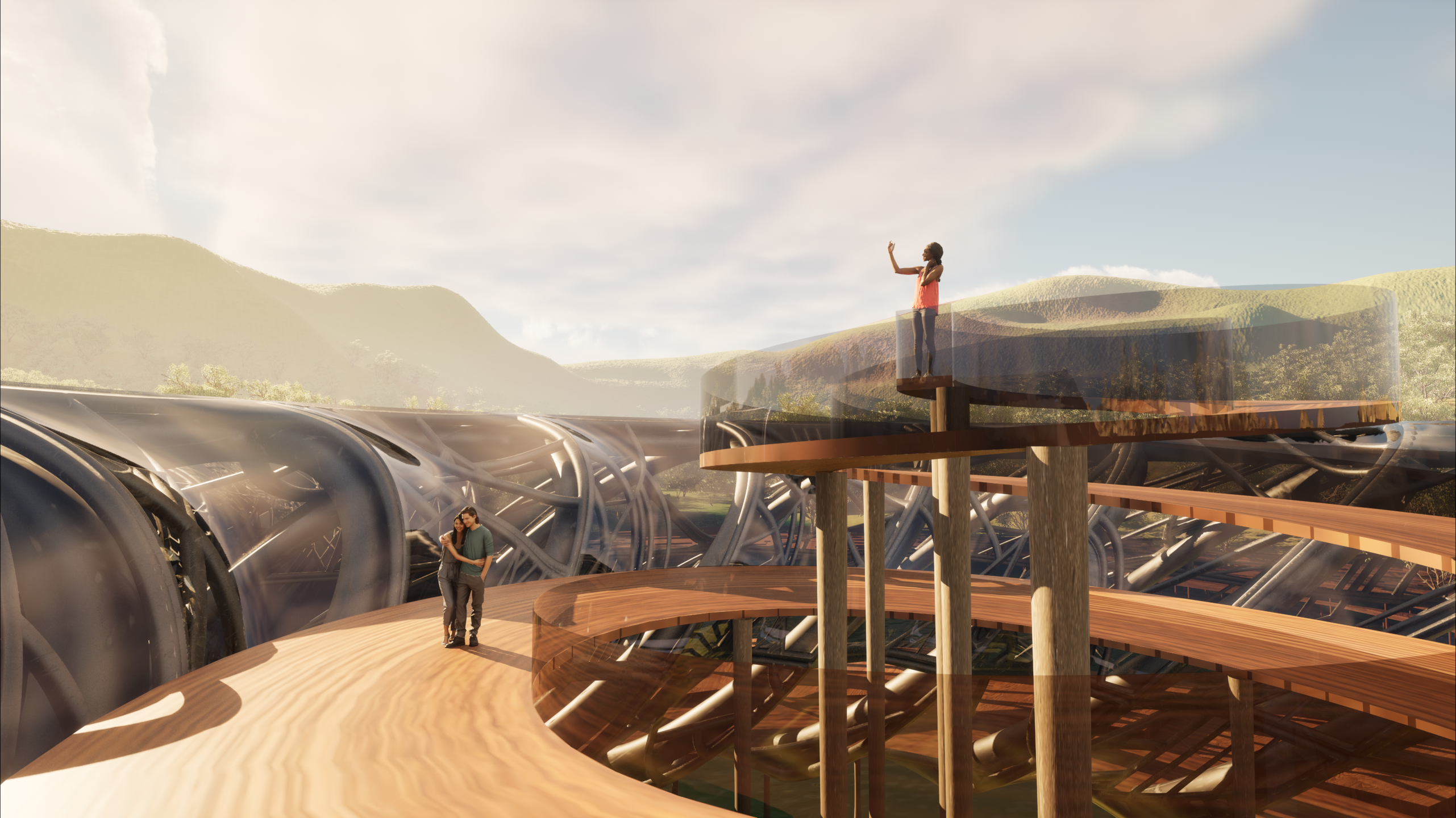
Concept
The Museum of Extinction (MoE) is a speculative museum dedicated to raising awareness of species extinction and broader global trends related to biodiversity lose. Located in Naples, Italy this museum will offer a contemplative and exploratory space. Visitors will engage with land, sky, and water through architectural programming while the formal narrative will treat architecture as an object: a temporal object off the past while simultaneously the future. Qualities of the facade allude to evolutionary biology and extinction. Half-submerged, the structure offers two main viewing platforms: one can engage with the water habitat below or the sky/land habitat above. The spiraling form and view platforms encourage slow movement and contemplation, traits necessary to grasp evolutionary spatial and temporal scales.
Visitors will be reminded of the current 6th Mass Extinction and are invited to imagine a world beyond our current geological age: the Anthropocene.
Computational System
Our computational design concept for the Museum of Extinction, “Fossilized Echoes”, was based on two key principles: mathematical surfaces and recursive patterns. Referencing shell fossils and evolutionary thinning, this museum is a formal expression of species extinction. A morphological evolutionary branching structure creates a formalized and experiential entry sequence. Mathematical equations are used to create a gastropod structure with which a recursive pattern informs facade panelization/structure.
Mathematical Surface Form Finding
First, the global shape is based on the mathematical expression for gastropods. We found inspiration in Jorge Picado’s paper “Seashells: The Plainness and Beauty of Their Mathematical Description”:
As far as the animal that lives in a shell grows he needs the shell to grow with him in order to keep accommodating him. The fact that the animal which lives at the open edge of the shell places new shell material always in that edge, and faster on one side than the other, makes the shell to grow in a spiral. The rates at which shell material is secreted at different points of the open edge are presumably determined by the anatomy of the animal. And, surprisingly, even fairly small changes in such rates can have quite tremendous effects on the overall shape of the shell, which is in the origin of the existence of a great diversity of shells.
Furthermore, by simply changing the input variables of the equation, one can achieve almost any gastropod shape. We explored various shapes and inputs and ultimately proceeded with the ammonite shell: first, it is extinct, which is metaphorically relevant. Secondly, the shape fit within our 24m height and 15,000m2 footprint requirements.




Recursive Pattern Panelization
The facade panelization is built using an abstracted “evolutionary thinning” pattern. Conceptually, ““Phylogenetic trees are important tools for organizing knowledge of biological diversity, and they communicate hypothesized evolutionary relationships among nested groups of taxa (monophyletic groups) that are supported by shared traits known as synapomorphies.”
As an analogy to extinction, the recursive pattern decays each generation until it eventually dies out, illustrating our genealogical connection and shared world. Consequently, in the final design, the pattern is most dense near the ground level entry and is least dense as one approaches the upper viewing platform, opening up to the sky and view beyond the structure.
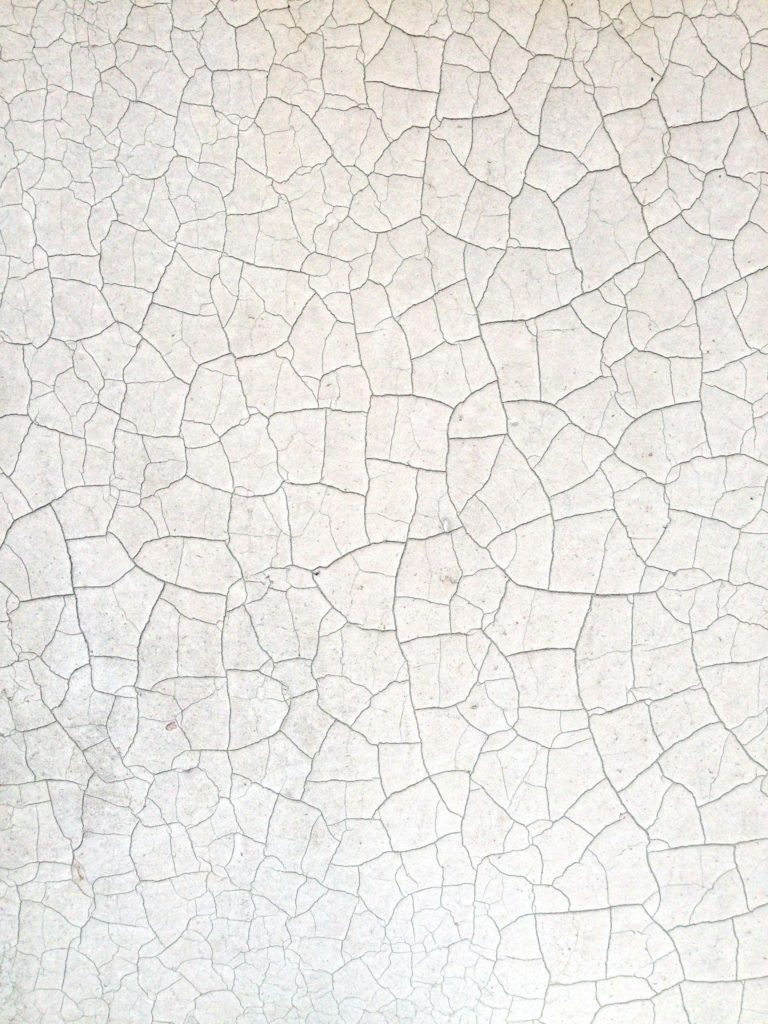
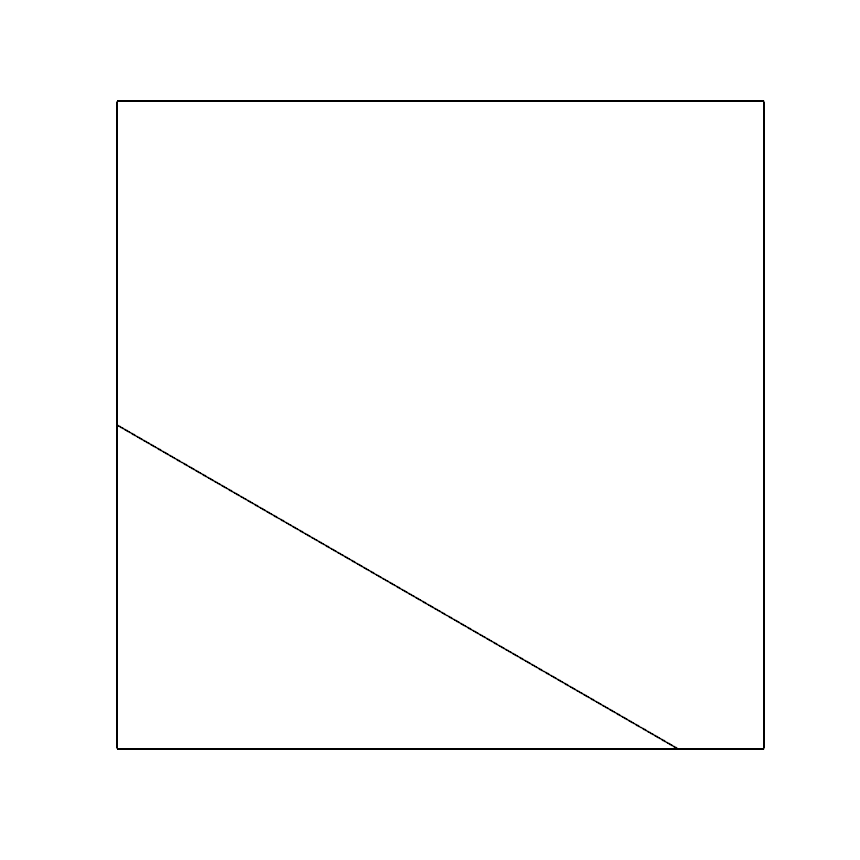
Early Exploration
Early attempts at implementing different shell shapes and recursive patterns helped inform our final workflow. We had to ensure the shell shape did not fold into itself, otherwise interior gallery spaces would being to loss volume. The initial recursive pattern, based on branching curves, was not dense enough and left much of the façade open; resulting in excessive glazing and a less effective patterning effect. Finally, we needed to integrate a structural system that would support the façade and building, one appeared to work with the shell and panelization and not as an afterthought.
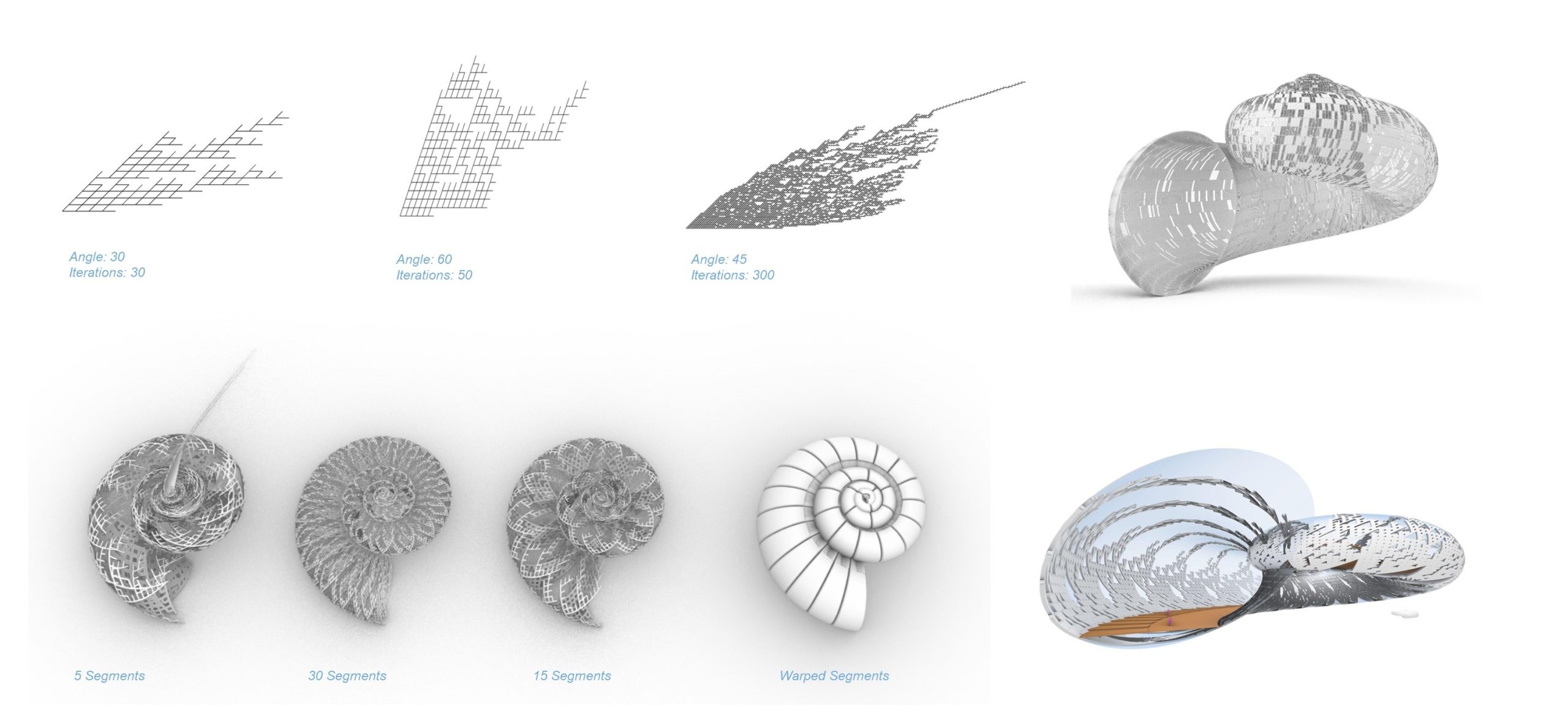
Design Methodology
Shown below are key aspects to the computational design methodology, built within Grasshopper for Rhino3D.
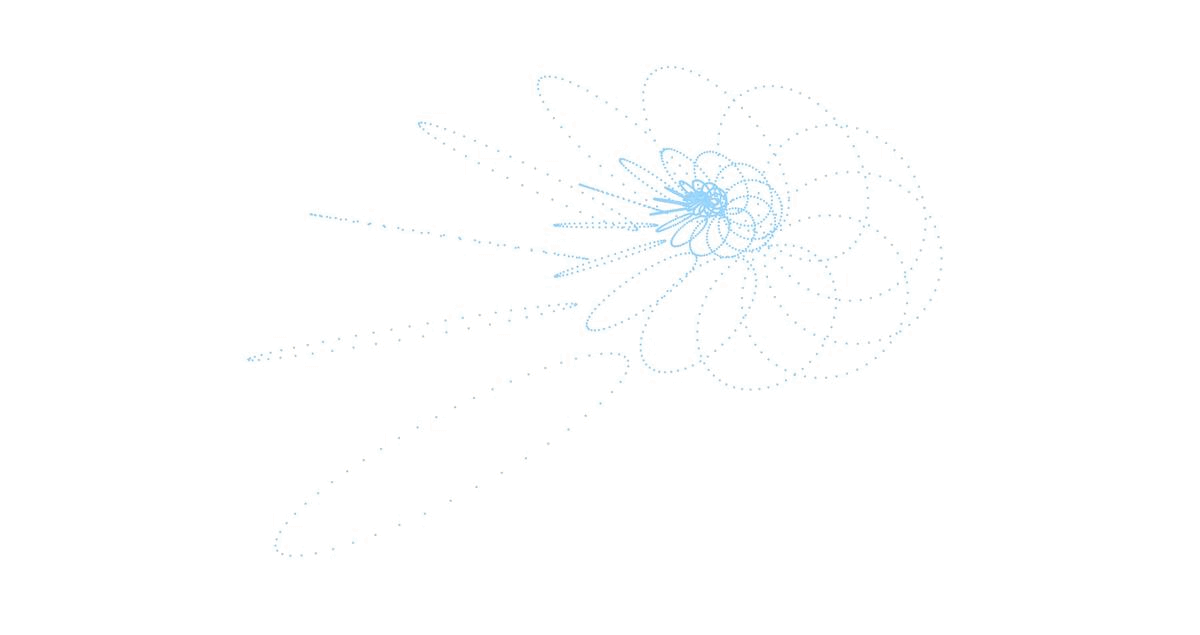

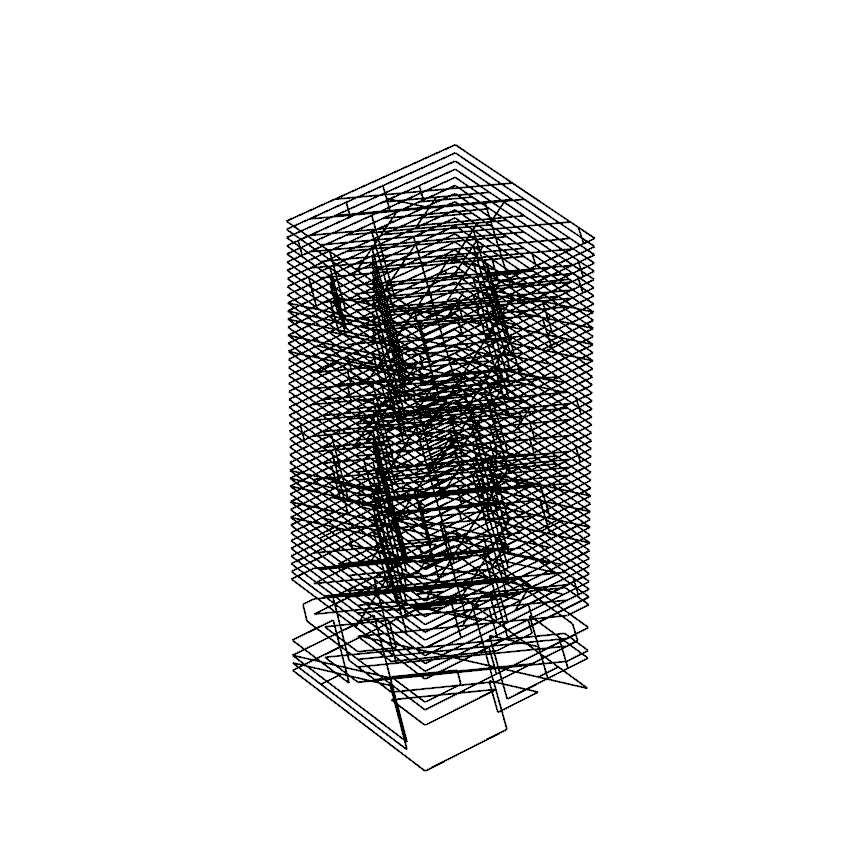
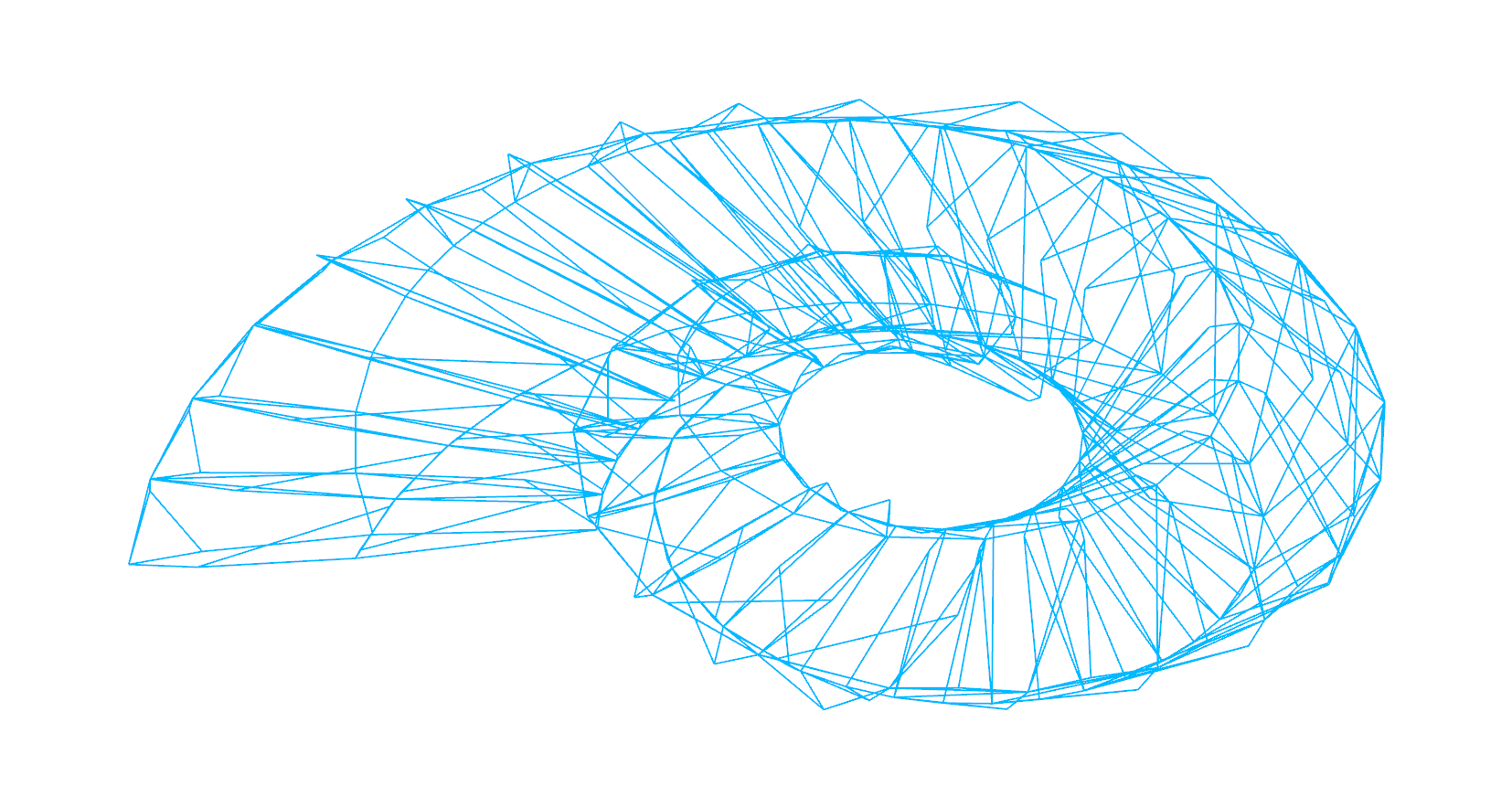

Form Iterations
Since the mathematical form finding and recursive pattern are both very flexible, many iterations can be explored. The final recursive pattern followed the same logic as the first one, but splits a surface, rather than branching a curve.
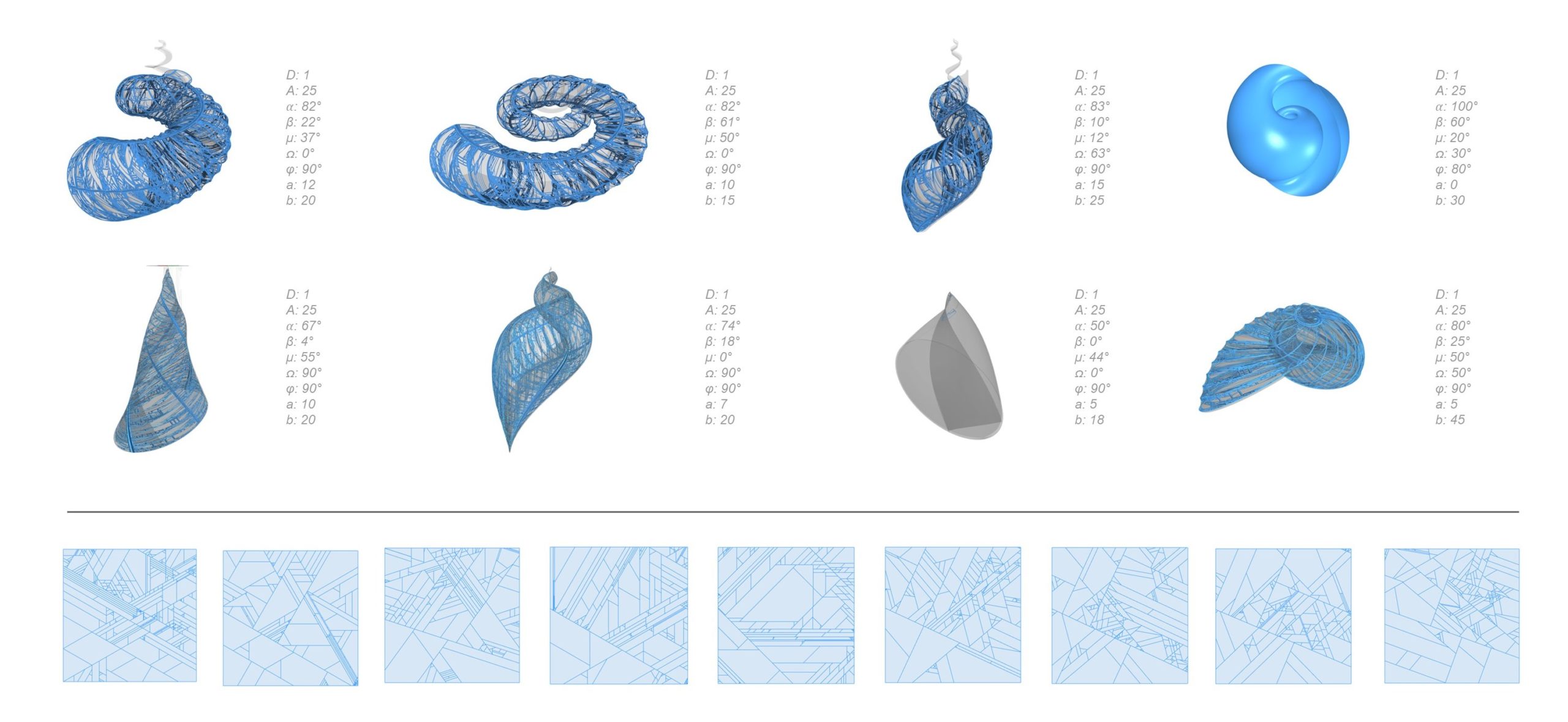
Architectural Design
The final architectural design includes a spiraling interior gallery that leads to a viewing platform at the upper level and a submerged viewing platform at the latest level. In this way, the shell metaphorically rises from the water and engages with the water, land, and skies. A similar spiraling boardwalk is created using the original recursive branching pattern. This time, visitors are invited to wander around the site. Like the main structure, visitors enter the boardwalk in the middle of the spatial journey, choosing to go up or down, left or right. The architectural and landscape experience is driven by our human decisions.
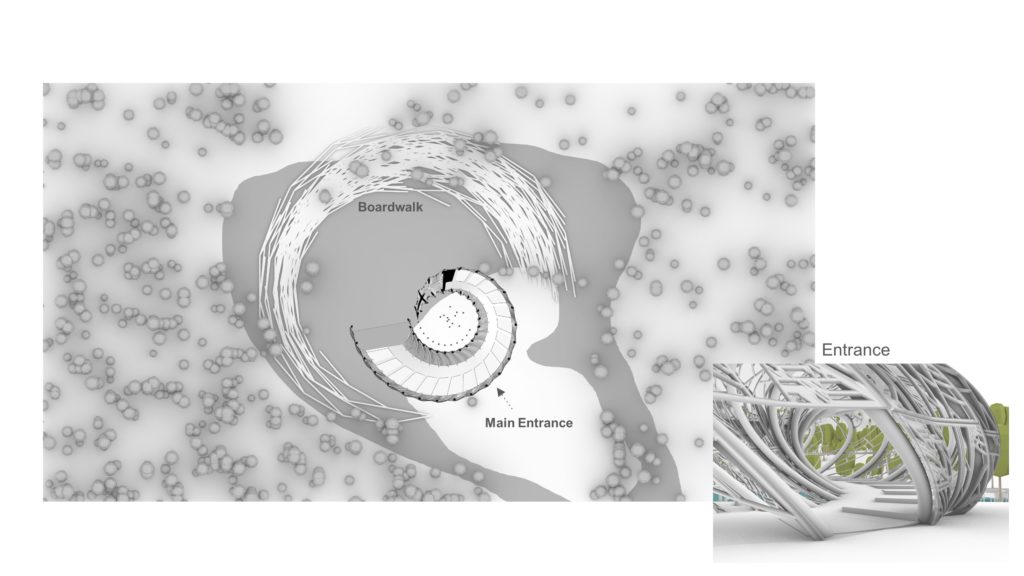
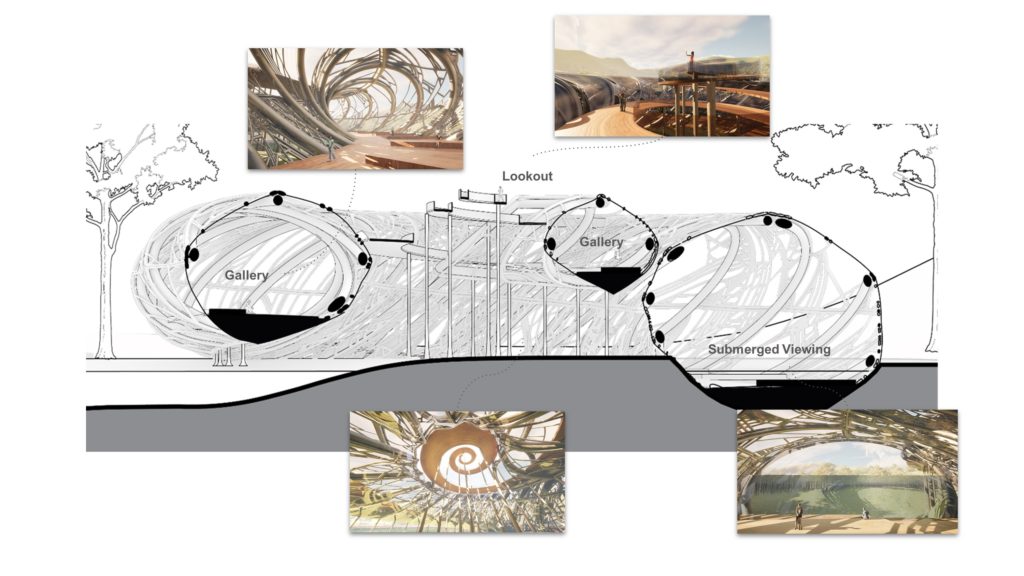
Final renderings are produced using Unreal and Datasmith to directly link our complex Rhino/GH model into the rendering landscape.
